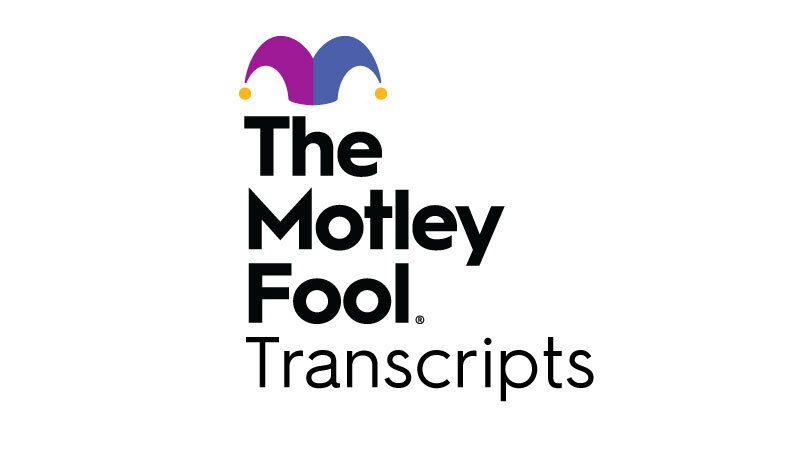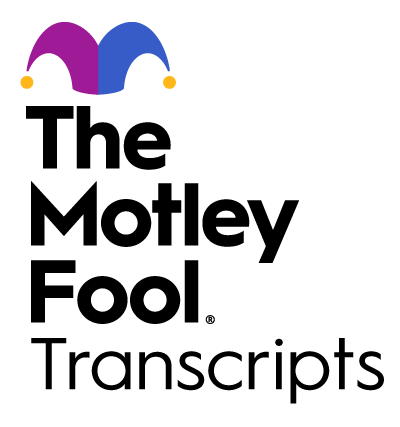

Image source: The Motley Fool.
BOK Financial Corporation (NASDAQ:BOKF)
Q3 2021 Earnings Call
Oct 20, 2021, 10:00 a.m. ET
Contents:
- Prepared Remarks
- Questions and Answers
- Call Participants
Prepared Remarks:
Operator
Greetings and welcome to the BOK Financial Corporation Third Quarter 2021 Earnings Call. [Operator Instructions] As a reminder, this conference is being recorded.
I would now like to turn the conference over to your host, Mr. Steven Nell, Chief Financial Officer for BOK Financial Corporation. Thank you, sir. You may begin.
Steven E. Nell — Executive Vice President, Chief Financial Officer
Good morning and thanks for joining us. Today, our CEO, Steve Bradshaw, will provide opening comments and Stacy Kymes, our Chief Operating Officer, will cover our loan portfolio, credit metrics and fee income businesses. Lastly, I’ll provide details regarding net interest income, net interest margin, expenses and our overall balance sheet position from a liquidity and capital standpoint. Joining us for the question-and-answer session are Marc Maun, our Chief Credit Officer, who can answer detailed questions regarding credit metrics and Scott Grauer, Executive Vice President of Wealth Management, who can expand on our wealth management activities.
PDFs of the slide presentation and third quarter press release are available on our website at bokf.com. We refer you to the disclaimers on Slide 2 regarding any forward-looking statements we make during this call.
I’ll now turn the call over to Steve Bradshaw.
Steven G. Bradshaw — President and Chief Executive Officer
Good morning. Thanks for joining us to discuss the third quarter 2021 financial results. This quarter was another in which our diversified revenue strategy was a key differentiator for us as we grew pre-tax pre-provision earnings by 22% linked quarter and eclipsed the $180 million in net income for the first time in the history of our Company.
Shown on Slide 4, third quarter net income was a record $188.3 million or $2.74 per diluted share. That represents growth in net income of 13% from the record set last quarter, a result of our long-term commitment to our balanced earnings model and breadth of business capabilities.
The key items that drove our success this quarter were, first, our fee-based business units continue to perform well with total fees and commissions up $21 million or 12% from last quarter. The contribution from our wealth management team continues to grow and impact results, achieving a new quarterly record for total revenues of $153 million for this quarter. This accounts for 30% of total revenues for the Company and 51% of total fees and commissions for the quarter.
Mortgage fees also increased $5.1 million or 24% linked quarter, primarily driven by a rebound in our reported margins from the lows recognized last quarter. Net interest revenue was unchanged on a linked quarter basis with a slight improvement in loan fees, primarily due to non-use fees from low utilization levels and our interest-bearing deposit cost of funds fell one more basis point this quarter. We continue to experience some compression in yields on our available for sale portfolio. However, that impact was more than offset by improved yields on our trading portfolio. Improving market conditions and credit trends allowed us to release $23 million of our loan loss reserve this quarter and $83 million for the year.
Expense management remains excellent. Total expense was flat on a linked quarter basis. We’ve managed expense growth to just slightly above 2% over the last two trailing 12-month periods, despite significant technology and cyber-related investments reflecting our disciplined approach.
Turning to Slide 5. Total loans were down $1.1 billion for the quarter. The PPP loan forgiveness accounts for $586 million of that contraction. Core loan growth continues to remain a challenge this quarter as our energy and commercial real estate customers continued to pay down debt or refinance in the long-term markets. Loans attributed to our wealth segment grew $32 million this quarter, allowing them to surpass $2 billion in outstanding balances for the first time.
Our core C&I book decreased at a pace similar to last quarter as our overall line utilization levels are at five-year lows. We believe this positions us for growth as the economy continues to rebound and supply chain disruptions are resolved. Average deposits increased another $344 million this quarter and are 9% higher than the same quarter a year ago.
Assets under management or in custody in our wealth management business grew 2.3% linked quarter to $98.8 billion, approaching the $100 billion milestone, largely due to new business acquisition and favorable market activity in the quarter.
I’ll provide additional perspective on the results before starting the question-and-answer session. But now Stacy Kymes will review the loan portfolio, our credit metrics and the fee businesses in more detail.
I’ll turn the call over to Stacy.
Stacy C. Kymes — Executive Vice President, Chief Operating Officer
Thanks, Steve. Turning to Slide 7. Period-end loans in our core loan portfolio were $19.8 billion, down just over 2% for the quarter as we continue to see borrowers in some specialty lending areas continue to reduce leverage. Overall commercial and specialized lending line utilization levels were down again this quarter. Their lowest level of over the last five years with the exception to that trend being our private wealth space, which grew at a 6% annualized clip on a linked quarter basis and 12% during the last 12 months.
Energy balances declined in the third quarter as energy borrowers have significant liquidity with current oil and natural gas prices and have been generally paying down debt. We continue to grow new customers in this space, but paydowns have outpaced new loans. Our current belief is that the fourth quarter will be the inflection point and we expect growth from this segment in 2022. Should drilling activity materially increase, the Company is well positioned to have strong growth in this sector given our long-term expertise and continuing strong commitment to the energy sector. Ancillary business from customer hedging, investment banking and treasury for this segment set a new record for fee revenue this quarter, 9% above the previous high set in the third quarter last year.
Healthcare balances fell slightly, down $34 million or 1% linked quarter, primarily driven by our senior housing assisted living sector. Looking forward, we remain very confident in our ability to perform from both a growth and credit standpoint in this portfolio as it remains a leader for us.
Core middle market C&I today is at the lowest level of utilization as any measured period back to March of 2015 dropping below 50% for the first time. This illustrates the significant capacity we have to move up as demand starts to come back online without it being predicated on any new customer acquisition. A return to more normal utilization levels organically adds about $600 million of core C&I loans outside the anticipated growth in the specialty areas. While the balances declined again this quarter, the broad C&I portfolio is beginning to stabilize and is reason for optimism heading into next year.
Commercial real estate balances contracted 3% this quarter. We continue to see borrowers use this low rate environment to refinance to the long-term fixed rate non-recourse market. 2020 was one of real estate’s lowest years for portfolio turnover as many of the permanent markets were cautious. As those have opened up, we see some catch-up activity that is inherently a sign of a healthy portfolio, but continues to create quarter-to-quarter volatility. I would expect balances to stabilize in the fourth quarter and resume a more normal growth pattern in 2022.
PPP loan balance forgiveness was substantial again this quarter with $586 million forgiven, shrinking the portfolio by 52%. Of the remaining PPP balances, only 4% of the 2020 vintage and 66% of the 2021 vintage remains. We expect the forgiveness process on the remaining balances to slow considerably. We believe we are well positioned for a more normal loan growth cycle as we look ahead into 2022. We believe that once supply chain constraints ease and we experience the full impact of fiscal stimulus, BOKF will be well positioned for accelerated loan growth.
Turning to Slide 8 you can see that credit quality continues to improve as we move further out from the pandemic. We continue to experience meaningful credit quality improvement across the broader loan portfolio with non-performing assets and potential problem loans both down significantly again this quarter.
Based on total commitments, this quarter ranks the first time that we returned to a level below the pre-pandemic fourth quarter of 2019 for total criticized assets from lending-related activities. These factors, coupled with continued strength in commodity prices and a continued optimistic outlook for economic growth in GDP and the labor markets, led us to release $23 million in reserves this quarter.
Net charge-offs were $7.8 million or 16 basis points annualized, excluding PPP loans in the third quarter. That’s a decline from last quarter’s $15.4 million or 30 basis points annualized. Net charge-offs have dropped to an average of 26 basis points over the past four trailing quarters, which is at the lower end of our historic loss range. As we look forward to the next quarter, we expect net charge-offs will be at the lower end of our historical range.
The combined allowance for loan losses totaled $306 million or 1.54% of outstanding loans at quarter-end, excluding PPP loans. Non-accruing loans decreased $38 million from last quarter, primarily due to a reduction in non-occurring energy loans. Potential problem loans totaled $333 million at quarter-end, down significantly from $384 million on June the 30th. Potential problem energy, services and general business loans all decreased compared to the prior quarter.
Turning to Slide 9. A highlight is the record-setting third quarter the wealth management team produced. Total wealth management revenues were $153 million for the quarter, up nearly 17% from the linked quarter and 14% above the previous record set in the third quarter of 2020. This includes the fee income lines that investors see in our corporate income statement, brokerage and trading, and fiduciary and asset management, as well as net interest income from loans and deposits in our private wealth group and net interest income generated as part of the brokerage and institutional trading group.
Banking products and services for private wealth clients continue to be a particular area to highlight. The total loan portfolio surpassed $2 billion in balances this quarter and is up 12% or $221 million compared to the same quarter a year ago. The deposit portfolio ending the quarter at $3.9 billion, grew 3% linked quarter and was up 12% compared to the same quarter a year ago. Total net interest income continues to grow, up 3% linked quarter.
Total brokerage and trading revenues increased $15.4 million or 25% linked quarter. This is largely due to a shift in product strategy made during the second quarter in our institutional trading and sales business coupled with adding new financial institution clients. This confirms our expectation last quarter that this shift in product focus and expanded customer base is sustainable. We feel confident that we will maintain a robust level of activity and revenue generation in our MBS activities firmwide. Our capital commitment is expected to remain relatively stable for the foreseeable future in this segment.
Also in the wealth management space, fiduciary and asset management fees were up almost 1% linked quarter and 13% compared to the same quarter a year ago. It’s important to note that the second quarter includes the annual tax preparation…
BOK Financial Corporation (BOKF) Q3 2021 Earnings Call Transcript
